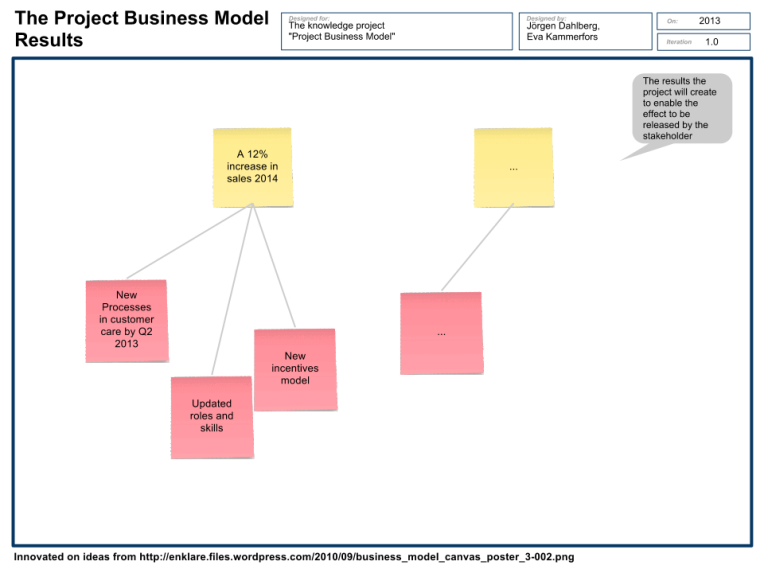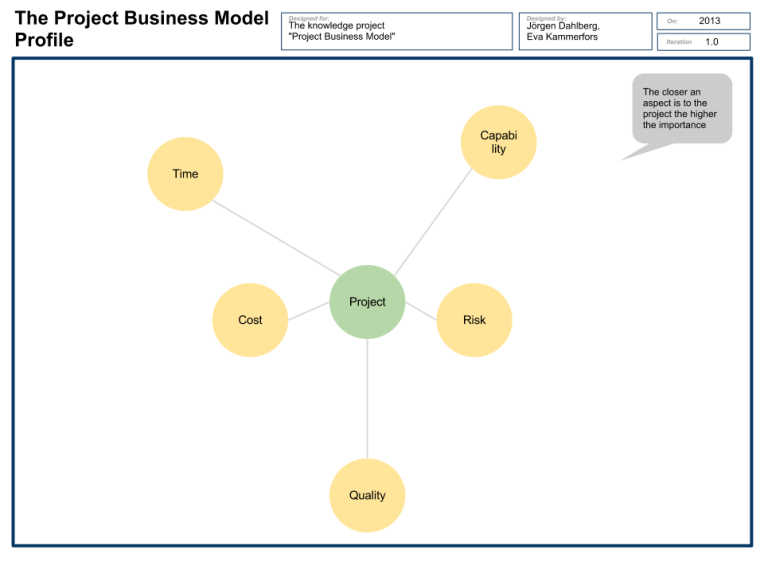This post is the third in a series of ten about real life experiences of using business model thinking as a foundation for planning and delivering change. Writing this post I’ve had the help of a true friend and admirable colleague (Eva Kammerfors) whom I’ve shared many of the referred to business model experiences with.
The Project Business Model Results
A value proposition is a promise about value. We care a lot about our promises so we start our project design with focus on understanding the customers effect and then we craft the results the project should generate to help the customer reach the effects.
The effects puts a focus on the customer perspective through understanding what effects (monetary and non-monetary) the project will deliver against and when.
The results puts a focus on the supplier perspective through understanding what results (product, service, services) the project will create to deliver against the specified effects.

When you plan the project effects and results, do so in a workshop format. Give everyone a set of cards that they can outline their own view of the projects on, then merge all cards on a wall sized card. After the merge the group can prioritize using dots or any other marker on the wall sized card.
This is as all the work in The Project Business Model a highly participative and visual way of creating the understanding of the project results and effects.
______________________
Earlier in the Project Business Model series of posts:
1. The Project Business Model
2. The project Business Model Profile
Next in the Project Business Model series of posts:
4. The Project Business Model Timeline
5. The Project Business Model Sprintlines
6. The Project Business Model SWOT
7. The Project Business Model Blue Ocean Strategy
8. The Project Business Model Principles
9. The Project Business Model Stakeholder Groups
10. The Project Business Model Stakeholder Impacts











